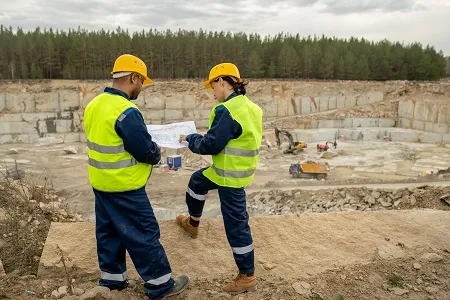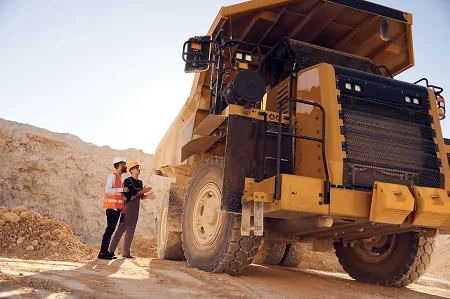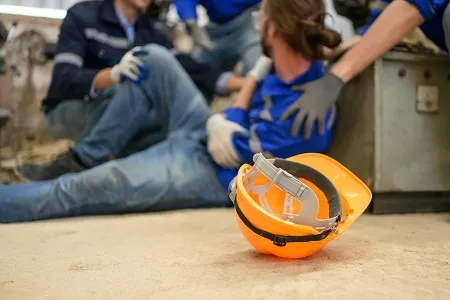Top Safety Hazards Facing Workers in the Mining Industry
Australia’s mining industry has made significant strides towards improving the safety of miners. According to Safe Work Australia, the fatality rate in 2015 dropped by 65% to 4.4 worker fatalities for every 100,000 workers from 12.4 in 2003. While this is a good thing, the industry still comes in third place when it comes to worker fatality rate with an estimated 9 deaths per year. In this article, we explore the various safety hazards in this industry and how they can be prevented.
Common hazards in the mining industry
This list is by no means comprehensive, rather, it aims at highlighting major hazards found in mines.
- Heat or thermal stress
In some instances, mining workers have to carry out their tasks in quite hot and humid conditions. This predisposes them to heat stress and dehydration. The use of electrical equipment and machinery also exposes such workers to burns from extremely hot surfaces. In severe circumstances, incorrect use of such equipment, detonators and explosives could lead to fires. Workers need to be trained on safe use of equipment as well as the importance of staying hydrated.
- Cave-ins
Unfortunately, cave-ins or collapsing of mining sites is one of the most common accidents. The risk of cave-ins is higher due to the use of explosives, pillar failure, and nearby seismic activity. A cave-in traps and kills mine workers.
- Blast-related hazards
Although the blasting methods and safe use of explosives have greatly improved over the last few decades, there are significant safety hazards associated with the use, storage, and use of explosives. Common blast-related hazards in a mining site include:-
- Fly-rocks – this is where a mining worker is struck by a rock for being too close to the blast site of if the rock is flung further than anticipated.
- Fumes from explosives – surface mine workers are often complacent when it comes to fumes from explosives compared to those in underground mines. This is due to the belief that such fumes disperse in the open air while in the real sense, they are just as hazardous as those in enclosed spaces. Therefore, similar safety precautions should be observed.
- Premature blasts – this could be either accidental due to faulty wiring or due to lack of proper training. Explosives buried just under the surface may also be triggered during digging or crushing of the mine site causing injuries or even death.
- Industrial deafness – prolonged exposure to loud explosions and machines could lead to debilitating hearing problems which, in the long run, causes industrial deafness. Apart from being provided with protective hearing equipment, mine workers should be trained on how to use such for maximum protection.
- Whole-body vibrations (WBV)
This occurs when the worker’s body is continuously exposed to jolts or vibrations by equipment or machinery. WBV happens when mining workers spend too much time sitting on mine extractors or standing as would be the case for jumbo operators. This can be mitigated through the replacement of manned machines with those which do not require human input. Supervisors should also minimise the time machine operators spend on such machines. Training on the safe use of such machines and WBV symptoms to look out for is critical.
Other safety risks in this industry include body stressing due to manual tasks, exposure to toxic contaminants, trips and falls, and being hit by moving objects or machines.

How to mitigate safety risks in the mining industry
While no magic can completely eradicate risks from mining hazards, there are strict safety measures that can minimise them.
The first step towards successful safety risk mitigation is to accept that the mining industry is plagued these dangers. Workers in the mining industry cannot afford to ever let their guard down. No mining project should be planned hurriedly as this could compromise the safety of the mine workers. Take your time to assess all safety risks and document clear instructions on how each can be mitigated.
Employees need to always wear their safety equipment such as earplugs, face masks, reflective vests, and hardhats and any other PPE. They also follow the safety procedures laid down to the letter. When documenting safety procedures, describe each probable scenario and list step by step instruction on how it should be handled. This could include instructions on first aid procedures, whom to contact, evacuation procedures, and so on.
All mining site workers and contractors need to go through vigorous safety training. Through training, you not only set out clear instructions on safety procedures but you also explain the necessity of these precautions and procedures. Mining workers should be taught on how to use different machines and equipment such as forklift systems, explosives, fall-arrest systems, and so on. Back strains, fractures, and other forms of body stress can also be reduced through training.
How to use Induct for Work to mitigate mining site safety hazards
The diverse talent in a mining site necessitates the use of a tool or a platform that can deliver comprehensive induction training cost-effectively. Online induction through Induct for Work is the only way to achieve this. A typical mining site may also be characterised by such factors as:
- Long-term, short-term and casual workers
- Visitor induction
- Location-based, task-based and position-based policies and instructions
- Legal safety regulations
- The need to deliver continuous training and retraining
- Collection of insurance documents and licenses from contractors
Induct for Work allows you to do all the above and so much more. You can subdivide the induction material for specific groups of people. For instance, you can set up specific induction content for visitors, contractors, casual workers, and permanent employees.
Being mining industry workers, we provide you with templates that conform to existing legal requirements in Australia’s mining industry. You can always edit the content to include new site or legal policies and procedures to stay compliant. You can also make the content engaging through simulations, videos, audios, and so on. Quizzes enable you to gauge the inductees’ understanding of the content you put forth.
Induction training is critical to the long-term health of your mining site(s). It also boosts employee engagement, focus, and morale. Induct for Work enables you to deliver effective, compliant, and consistent training to your personnel using your own content. Still unsure? Sign up for an obligation-free 14-day trial.
Do you have any questions or great tips to share?
Induct for Work – the only online induction system you would need to run online inductions.



